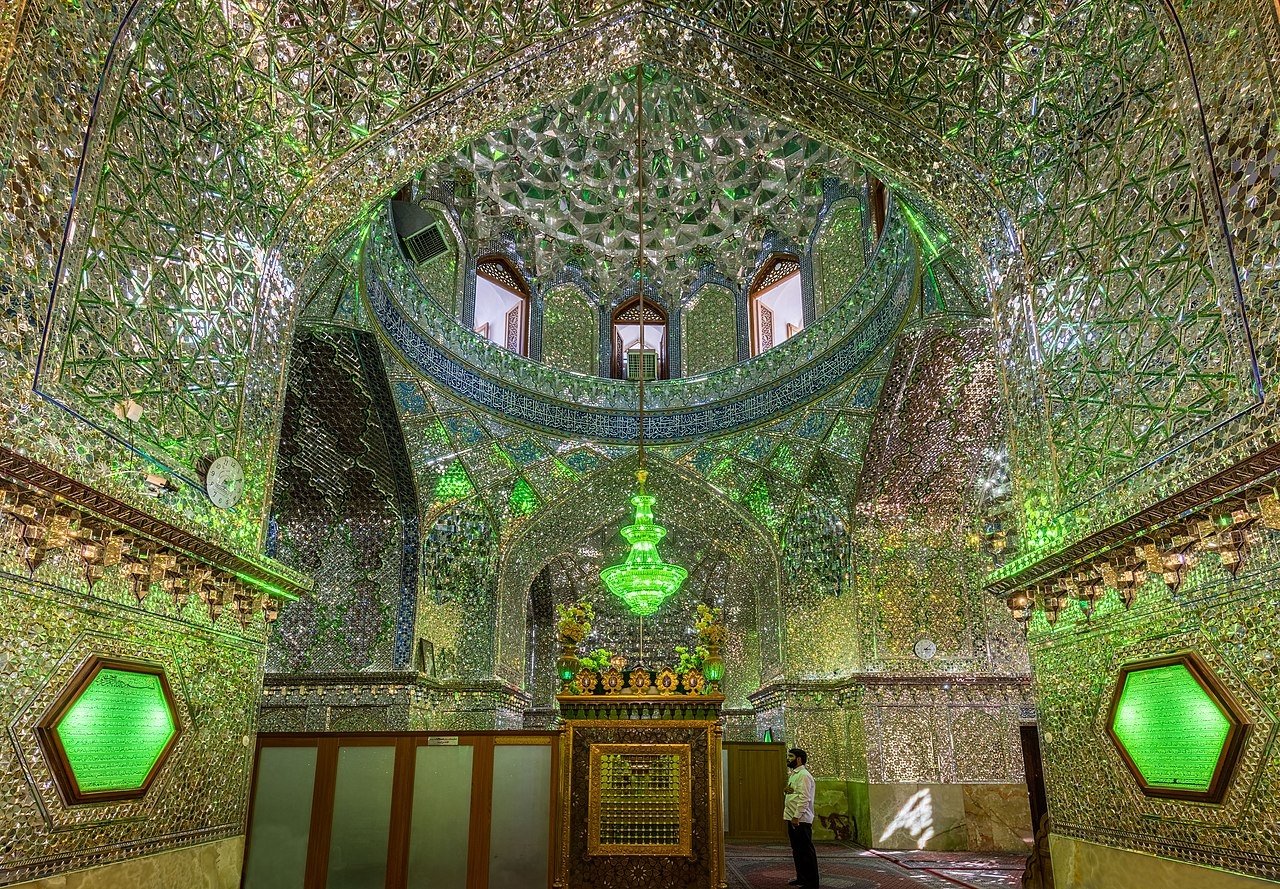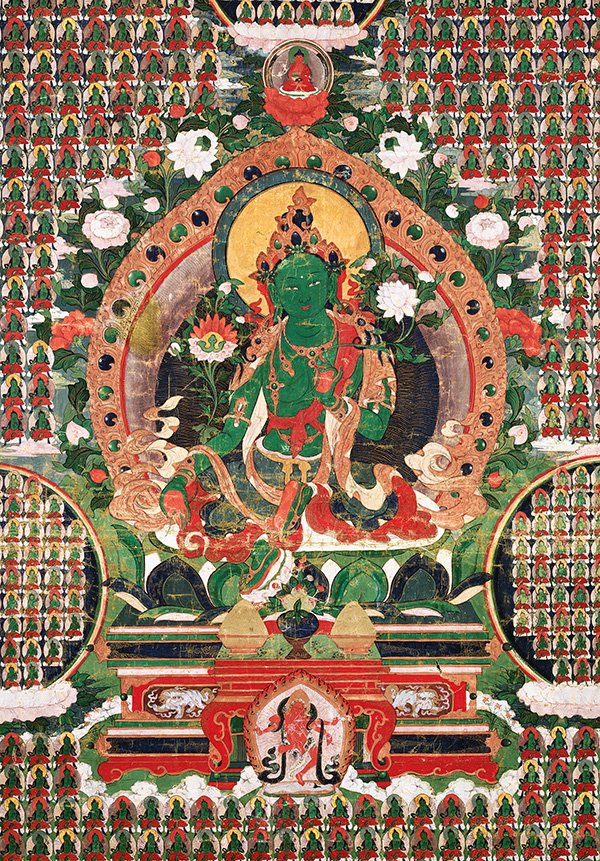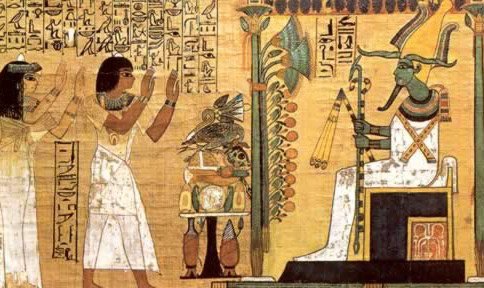Meditations on a mandala: holding the tension between Being and Doing
I colored this mandala a few days ago when my mind and heart were in turmoil. I needed to find ground under my feet. So, I colored this mandala intuitively, without really thinking. I let my heart choose; not my head.
Mandala as a tool for finding wholeness
Mandalas are circular drawings that are used in many cultures across the world as tools for meditation. Typically, a mandala has a center, and then radially expanding elements that move toward the periphery. They have been thought to represent, in two dimensions, the cross-section of a temple, with the inner sanctum at the center. Carl Jung brought the use of mandalas to Western psychology, and used them himself and with his patients as a way of finding a symbol for wholeness.
I am deeply drawn to Jung’s idea of wholeness, which is somewhat different from the new age idea of “healing.” Often, though not always, this “healing” is one-sided – choosing love and light and joy, and bulldozing over the unwanted opposites. Consequently, these rejected parts of ourselves lodge themselves in our unconscious, and dictate our behavior from there, without leaving us any choice in when and how they express themselves. Jung called them “autonomous complexes.” Jung’s idea of wholeness, which he called “individuation” (really meaning in-dividuation, or removing divisions), is about accepting ALL OF OURSELVES, warts and all! And working with a mandala, among other things, can be a tool to do that work.
Later, over the next few days, I have sat with it, and as things have revealed themselves, I have done more reading and thinking, and then gone back and looked at the mandala again. This approach, of elaboration and then returning to the symbol repeatedly, is what Carl Jung called “amplification,” or “circumambulation” of a symbol. This process reveals the many layers of meaning often hidden in a symbol, and this same process is utilized in the Jungian analysis of dreams and other imagistic material.
For me, this process of being with this mandala over the past few days has been the act outlined in the title – that of holding the paradox between Being and Doing – between focus and relaxation, between intuition and thinking. And it has felt like the gentle rhythm of the ocean – waves coming in, crashing, and then receding – in endless succession. There is something immensely soothing about it.
Of course, we never fully understand a symbol. Part of its very nature – of being a symbol – is that its archetypal core lives in the unconscious, and is thus mysterious and unintelligible to our conscious, rational selves. In fact, if and when we fully (consciously) understand a symbol, it no longer has its numinous quality (i.e., it is no longer a mystery, with both terrifying and fascinating qualities). At that point, it no longer remains a symbol; it just becomes a sign!
Here are, then, a few insights the symbol of this mandala has brought for me (as of now).
Viriditas: The medicine of the green container
The overall feel of this mandala is one of greenness – different shades of green. Green is a powerful color. The color green is invoked most poetically by Hildegard von Bingen (1098-1179), the German Benedictine abbess, writer, composer, philosopher, Christian mystic, visionary, and polymath. She used the term viriditas for the “greening power” of nature, which to her was synonymous with the greening power of the divine. For Hildegard, viriditas meant green, greenness, and growth, as well as vigor, verdure, freshness and vitality. The presence of green was synonymous with finding divine blessing and sanctuary.
Indeed, the image of spring, spreading her green fingers over a frozen and denuded landscape, is nothing short of a miracle! In the Northern climes, where deep winter lasted a very long time, and the arrival of spring was seen as a return of life itself, images of the Green Man were revered and celebrated. In Egypt, the God Osiris, who is killed by his brother, and then is brought back to life by his sister-lover-Queen, Isis, is often shown to have green skin. He represents the cycle of life, including that of vegetation – of death and rebirth.
Indeed, the word “Green” itself comes from Middle English grene, from Old English grēne, from Proto-Germanic grōniz, which all mean “to grow.”
Many Islamic countries use the color green on their flags, and the interiors of many mosques have green adornments. The dome and the interior of Muhammad’s tomb are green. The Christian crucifix, representing the dying and resurrecting Christ, is also often pictured as green.
Green is also the color of love. Aphrodite and Venus have been assigned the color green. So is the color assigned to the heart chakra, Anahata, in Hindu/Buddhist system.
The shadow side of green
One lesson we keep learning in life, and one that was emphasized by Carl Jung, is that ALL OBJECTS CAST SHADOW! Nothing is purely and absolutely good! Indeed, the color green’s very relationship to life and growth also makes it a necessary feature of death and putrefaction. Slime, mold, poison, pus, and vomit are all green. So are the threatening faces of witches, the bodies of extraterrestrial enemies, dinosaurs, and monsters. In the psyche, too, there is the green-eyed monster of jealousy, and being “green with envy.” “Being green” is also about immaturity, inexperience, awkwardness, unripeness.
Finally, green growth alone, without a compensating red core of passion and its eventual self-destruction, will give rise to cancer, where out-of-control growth chokes out life!
Red: Green’s fiery complement
It is interesting that my intuitively created green mandala has a core where the dominant color is red.
Indeed, in color theory, red is the complementary color of green. Green is moist and cool; whereas red is hot and dry. The two colors need each other to make life possible and to keep things dynamic. Red is activity, focus, passion; green is relaxation, rest, rejuvenation.
In alchemy, “reddening” or rubedo is the final step of the Work (after blackening and whitening), and in psychological alchemy, it is often understood as the psyche – after going through its night journey of darkness, interiority and depression (blackening, or melanosis or nigredo), and then reflecting on and mentally understanding what it went through (whitening, or leucosis or albedo) – finally returns back into the lived world. This is the stage of reddening, or iosis, or rubedo. Once at this stage, the psyche becomes “sanguine,” i.e., it has life-blood coursing through it once again, and now it can fully participate in the mundane world, but from a transformed place.
The instinctive human psyche has always known this truth. In a Tibetan Buddhist thanka (see image), the serene Green Tara appears beneath a small red Buddha and above a fierce red dakini. To the Greeks, fruitful green Aphrodite was the lover of fierce red Ares. Using the symbolism of psychological alchemy, it is the green vessel that holds the red substance of the highest value – the Green Dragon’s red blood. Similarly, the emerald chalice of the grail contains the holy blood of Christ.
Indeed, this dance of green and red was appreciated by Hildegard von Bingen, who wrote:
“O most honored Greening Force,
You who roots in the Sun;
You who lights up, in shining serenity, within a wheel
that earthly excellence fails to comprehend.
You are enfolded
in the weaving of divine mysteries.
You redden like the dawn
and you burn: flame of the Sun.”
– Hildegard von Bingen, Causae et Curae
Blue: the threshold guardian
In the mandala above, it appears as if the dance of the green and the red is mediated and “officiated” by the blue. Indeed, this is the psychological function of blue in alchemy.
Psychological alchemy is a vast subject, and I will continue to speak about elements of it (as I continue to learn more), because I believe that it is one of the most nuanced symbol systems to understand the evolution of human psyche. Briefly, psychological alchemy begins with the raw material (the prima materia), which corresponds to the psychic stage of chaotic thought and confusion (massa confusa). The Great Work (opus magnum) of psychological alchemy begins with the blackening of this prima materia. This stage is variously called nigredo, or melanosis. It is the stage of turning inward, going into the depths, the depression, the withdrawal from the lived world – in order to encounter what is brewing within. It is the legendary Dark Night of the Soul, or entering the belly of the beast! This stage is eventually followed by the next stage of whitening – the albedo. This is a stage of mental understanding of the inner suffering – a clearing, a lightening, a becoming like a silver mirror. Here we “understand,” what happened to us – a stage sometimes referred to as unio mentalis (mental union). Interrestingly, though, this stage was seen by most alchemists as not the goal of the Work, but only a waystation. However, this stage did represent a much-needed respite from the deep, dark depths. There are other stages that follow, but they are not the subject of today’s discussion.
What is important for today’s discussion, is the fact that this transition from black to white often happened through shades of blue.
To quote James Hillman:
“…the blues of bruises, sobriety, puritan self-examination; the blues of slow jazz. Silver’s color was not only white but also blue… The blue transit between black and white is like that – sadness which emerges from despair as it proceeds towards reflection. Reflection here comes from or takes one into a blue distance, less a concentrated act that we do than something insinuating itself upon us as a cold, isolating inhibition. This vertical withdrawal is also like an emptying out, the creation of a negative capability, or a profound listening — already an intimation of silver.”
Or, as Goethe said in his Color Theory:
“…blue still brings a principle of darkness with it... As a hue it is powerful, but it is on the negative side, and in its highest purity is, as it were, a stimulating negation. . . a kind of contradiction between excitement and repose.”
Thus, the blue in this mandala gives us that shade, that middle ground – that threshold – between the red core of passion and focus and excitement, and the green container of repose, relaxation. Indeed the blue threshold allows the dance between Doing and Being to flow and merge – to approach and move away – to live in dynamic contradiction that is life itself.



